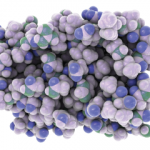These cases present some intriguing considerations regarding the immunological underpinning of COVID.
The clinical course of COVID-19 varies from mild to critical, possibly progressing to death. Cytokine storm, macrophage activation syndrome (MAS) and secondary hemophagocytic lymphohistiocytosis (sHLH) are disease processes triggered by infections, autoimmune diseases, drugs or malignancy. Clinically, cytokine storm presents with a syndrome of excessive immune activation that causes fever, pancytopenia, hyperferritinemia, splenomegaly, hepatitis, encephalopathy and coagulopathy. The etiology is thought to be caused by excessive activation and proliferation of T lymphocytes and macrophages with massive hypersecretion of proinflammatory cytokines, including interleukin 1 beta (IL-1β), IL-6, interferon-γ (IFN-γ), and tumor necrosis factor α (TNFα).3,4
Huang et al. described a cytokine profile similar to that in sHLH, which is associated with COVID-19 disease severity. It is characterized by increased IL-2, IL-7, granulocyte-colony stimulating factor, IFN-γ inducible protein 10, monocyte chemoattractant protein 1, macrophage inflammatory protein 1-α and TNFα. It is well known that IL-6 and IL-1β blockade has been successfully used in treating MAS secondary to systemic juvenile idiopathic arthritis (sJIA).5,6 That success has led to clinical trials where more than one-third of patients achieved clinical remission.7,8 Additionally, the IL-1 receptor inhibitor, anakinra, has been associated with improved survival in sepsis with MAS-like features.9 Similarly, the IL-6 antagonist, tocilizumab, could suppress the cytokine storm, as suggested by early promising results in a small cohort of COVID-19 patients.10 Therefore, it is worthwhile exploring whether blocking other cytokines involved in MAS or sHLH may be beneficial in cases of cytokine storm from COVID-19 infection.
TNFα may play a key role in the cytokine storm. TNFα is a 26 kd homotrimeric transmembrane protein expressed on the surface of macrophages, T lymphocytes, natural killer cells, smooth muscle cells and fibroblasts. TNFα, along with IFN-γ, plays a significant role in the immune response against viral infections. TNFα and IFN-γ exhibit a cross-talk at the level of TNF receptor 1 (TNFR1) to induce activation of macrophages. IFN-γ signaling causes nuclear localization of STAT1α that precludes it from being recruited at TNFR1, leading to an enhanced TNFα-induced NFκB activation.11-13
Blocking IFN-γ with emapalumab has been described in successfully treating secondary HLH due to multiple viral infections.14 Emapalumab is a human monoclonal antibody to IFN-γ that acts to block its binding to cell surface receptors and activation of inflammatory signals. Emapalumab is used to treat severe HLH in which serum IFN-γ levels are elevated.15,16
Similarly, TNFα inhibition may theoretically increase the risk of viral infections, but could potentially be beneficial in cases of cytokine storm.17 From the literature on the 2003 SARS-CoV infection, it is suggested the viral infection is associated with decreased angiotensin-converting enzyme 2 (ACE2) expression, leading to an increased activity of the renin-angiotensin system responsible for lung injury.18



